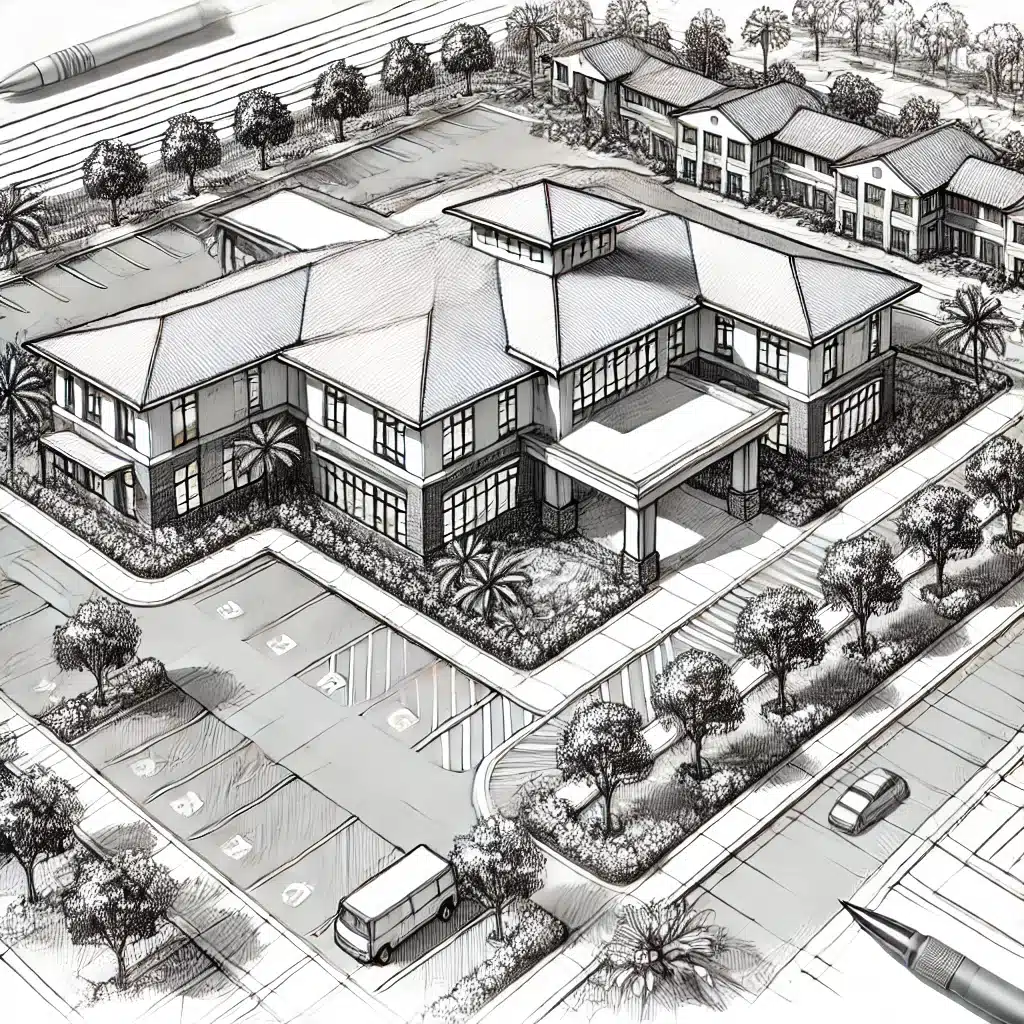Adaptive Reuse Projects: Converting Senior Living Facilities into Behavioral Health Treatment Centers


Adaptive reuse projects are an innovative approach to real estate development, especially in the healthcare sector. At ZLD Partners, we specialize in converting former senior living facilities into state-of-the-art behavioral health treatment centers.
This strategy leverages existing structures, revitalizing them to meet the specific needs of behavioral health operators. Here’s a deeper dive into the benefits and processes behind these adaptive reuse projects:
How to Improve Sustainability and Cost Efficiency
One of the primary advantages of adaptive reuse is sustainability. Repurposing existing buildings reduces the need for new construction materials and minimizes waste. This approach is environmentally friendly, supporting a reduction in the carbon footprint associated with demolition and new builds.
It also cuts down on costs—rehabilitating an existing structure is often more economical than starting from scratch, allowing developers to invest more in enhancing the facility’s function and aesthetics rather than in the basic structure.
Faster Time to Market with Adaptive Reuse Project
Adaptive reuse projects can often be completed faster than new construction. The core infrastructure—such as plumbing, electrical, and the building envelope—is already in place, significantly reducing the time required for project completion.
This speed can be critical for behavioral health operators looking to expand quickly in response to growing community needs or to capitalize on market opportunities.
Repurpose Behavioral Health Treatment Centers, etc. Senior Living Facilities
Buildings can also be located in a portion of the city that may be better suited for another kind of Commercial Real Estate Healthcare Facility. Buildings like former senior living facilities, are often located in strategic areas, such as residential neighborhoods or near other healthcare services, making them ideal for adaptive reuse projects to be converted into other behavioral health treatment centers.
These locations tend to be accessible and familiar to potential patients, reducing barriers to care. By repurposing these buildings, we preserve their “community-centric” locations, which can significantly enhance the visibility and accessibility of behavioral health services.
Remodeling Senior Living Facilities can Have “Easy-to-Adapt” Utilities and Design Features
While senior living facilities and behavioral health centers serve different populations, they share common design elements such as private rooms, communal spaces, and accessibility features.
These existing layouts can be adapted to meet the specific requirements of a behavioral health setting, such as incorporating therapy rooms, secure patient areas, or specialized medical spaces.
The adaptability of these buildings provides a strong foundation for creating a therapeutic environment that supports recovery and wellness.
How Repurposing a Commercial Real Estate Facility to Serve the Behavioral Health Community
Adaptive reuse projects, remodeled healthcare buildings, and “ground-breaking” projects can all breathe NEW LIFE into older or underutilized buildings, contributing to community revitalization.
By transforming a different mental health (or behavioral health) facility into a behavioral health center, we create a dual impact:
1. Preserving local history and architecture while…
2. Addressing a critical need for safe local mental health services!
This approach not only enhances the building’s value but also fosters goodwill within the community by maintaining its character and purpose.
Adaptive Repurpose Projects Create Financial and Market Advantages
Adaptive reuse can offer significant financial advantages. For example, these projects may qualify for various grants, tax incentives, or subsidies designed to encourage sustainable development or the repurpose of existing buildings.
Additionally, from a market perspective, the transformation of these facilities into behavioral health centers aligns with the growing demand for mental health services, creating new revenue opportunities and meeting a vital public need.
How to Find the Right Behavioral Health CRE Solution
Of course, adaptive reuse is not without its challenges. Developers must carefully assess the condition of the existing structure, address any regulatory or zoning issues, and ensure the building meets current healthcare standards.
The planning and design phases require close collaboration with architects, contractors, and healthcare providers to ensure that the finished facility not only complies with all regulations but also supports optimal patient care.
At ZLD Partners, we believe that adaptive reuse represents the future of real estate development in healthcare. It aligns with sustainable development goals, supports cost-efficient expansion, and meets the growing demand for behavioral health services.
By transforming former senior living facilities into behavioral health centers, we provide a unique solution that benefits developers, operators, patients, and the communities they serve.
Talk to us to learn more about our innovative approaches in healthcare real estate development and how we’re making a difference in communities across the country. Let’s connect to explore how adaptive reuse can serve your organization’s expansion needs!

